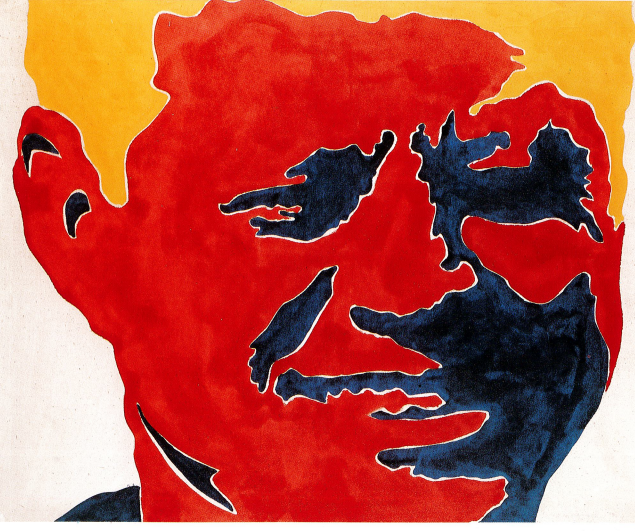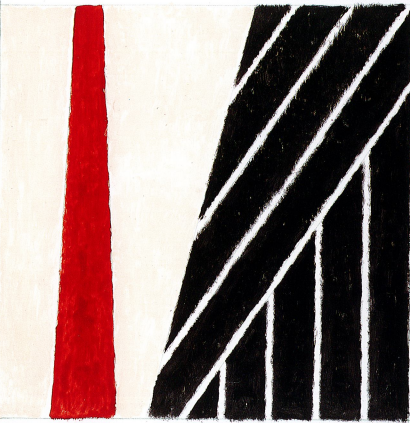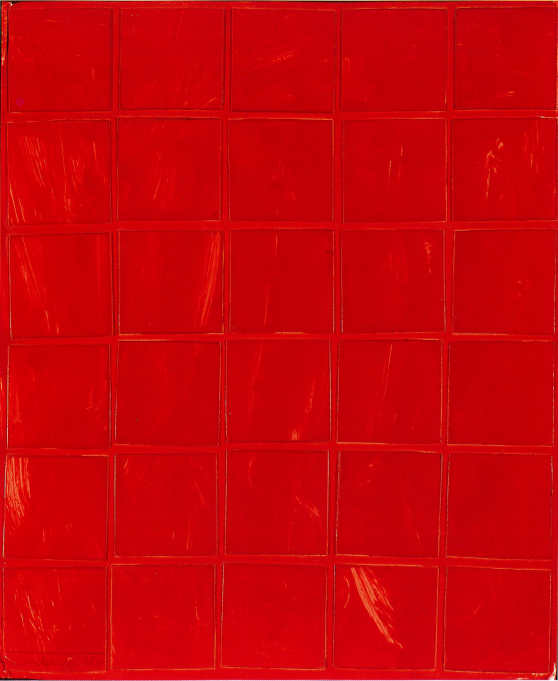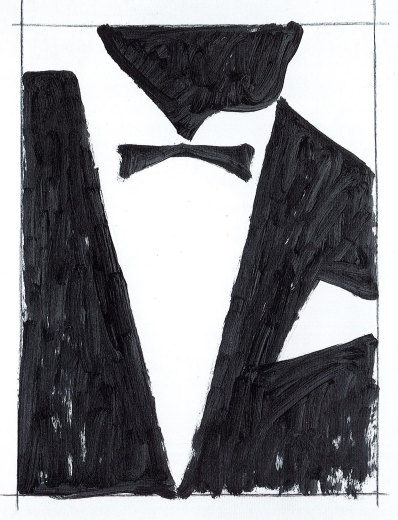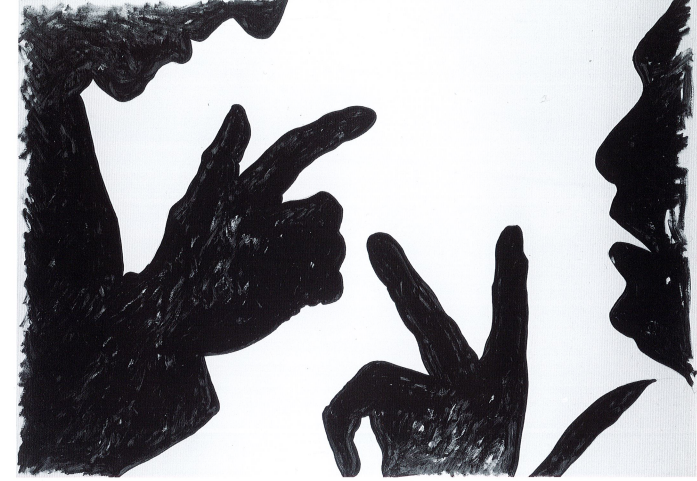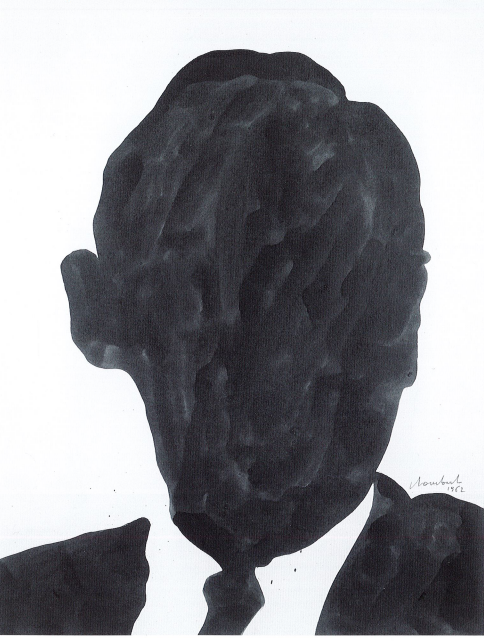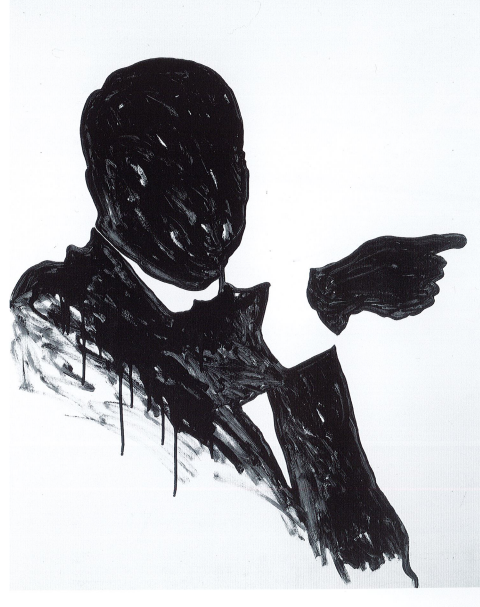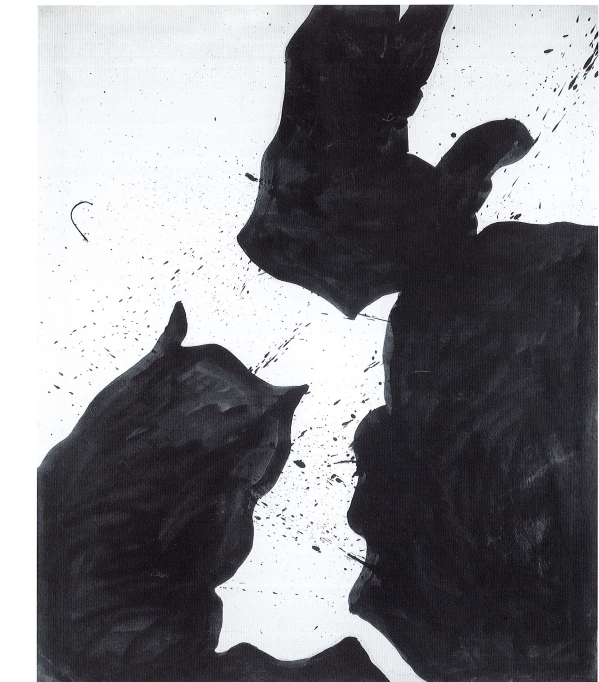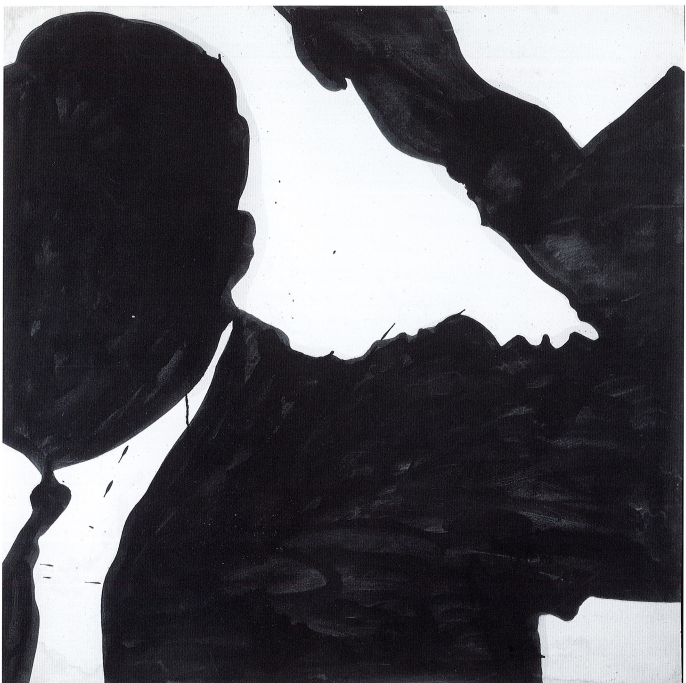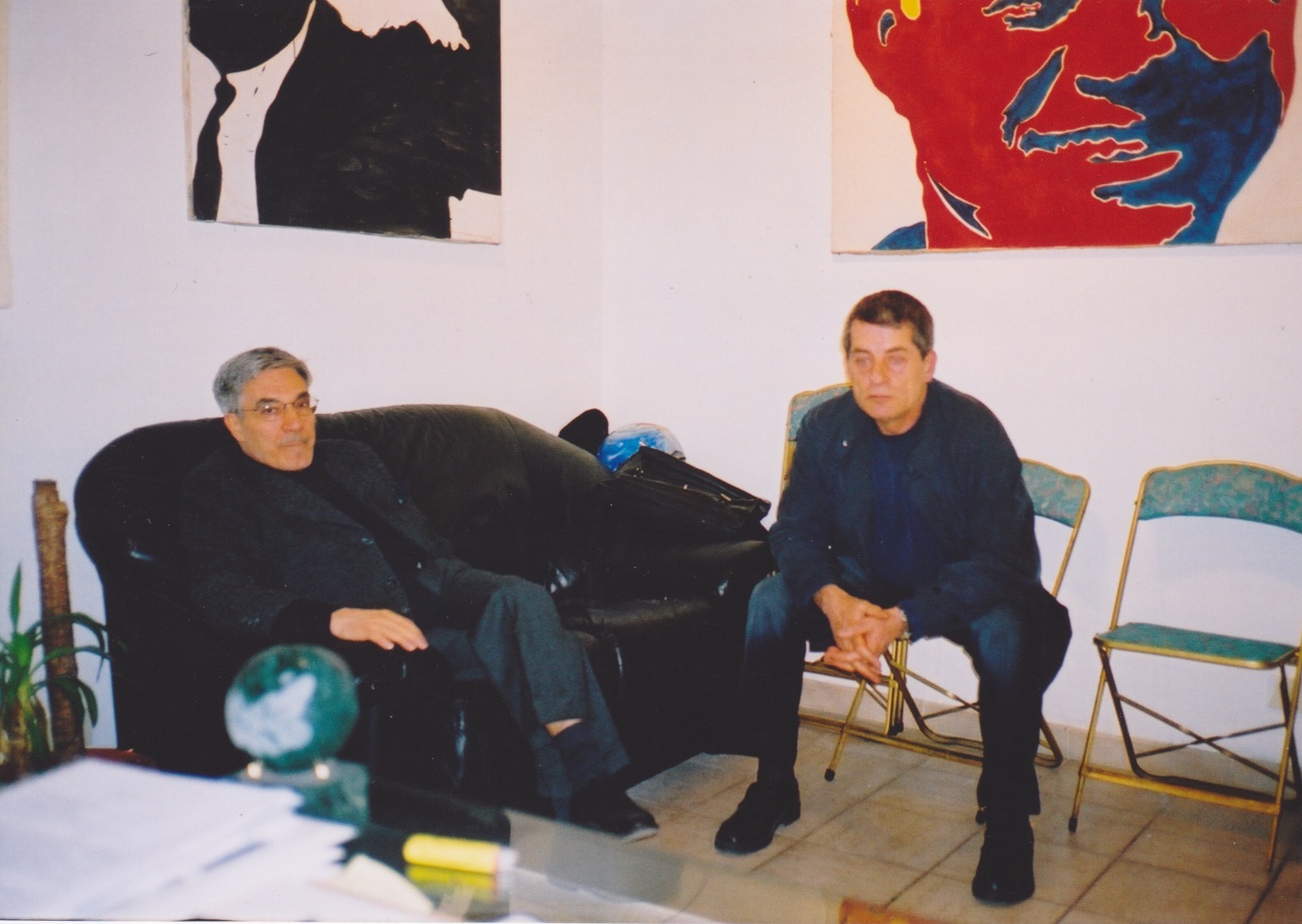
The choice of the collected works is aimed at capturing and illustrating one of the salient moments in the progress of Lombardo’s research and, more generally, of the movement of the so-called “Scuola di Piazza del Popolo”(Angeli, Bignardi, Festa, Fioroni, Kounellis, Lombardo, Mambor, Schifano, Tacchi). The moment in question is when, in the painting of most of the artists mentioned, a transition from the reclusive and abstract dimension of monochromes to that of a new figuration can be observed.
The crucial period is the season between 1960 and 1961, and the transformation in question clearly results from a reception within the pictorial problematic of the new imagery and iconosphere that were beginning to be popularised by the nascent mass media system (cinema, television, advertising, gravure press, etc.). In the field of visual arts, the icons of this new imagery are on the point of being accepted and re-proposed in an inquisitorial and bombastic tone by the rampant phenomenon of Anglo-American Pop Art.
In this context, Lombardo recalls a heated discussion, which took place in his studio in front of the monochromes and in the presence of Schifano, Mambor, Tacchi and Festa, in which the latter, along with other and more confused arguments, accused him of making an intellectual painting, completely withdrawn into itself and reclusive within the four walls of the studio, and felt the need to open it up to the images of the new world that was beginning to pulsate around them.
This latter argument was picked up by Lombardo and incorporated into his work, which was already moving towards more extrovert research, accelerating its transformation in the direction induced by a need, perceived as inescapable and strong, also present in the monochromes, to confront the public with the enigmatic and dangerous transformation of contemporary reality, instead of entertaining them with the intimist expression of their poetic emotions.
